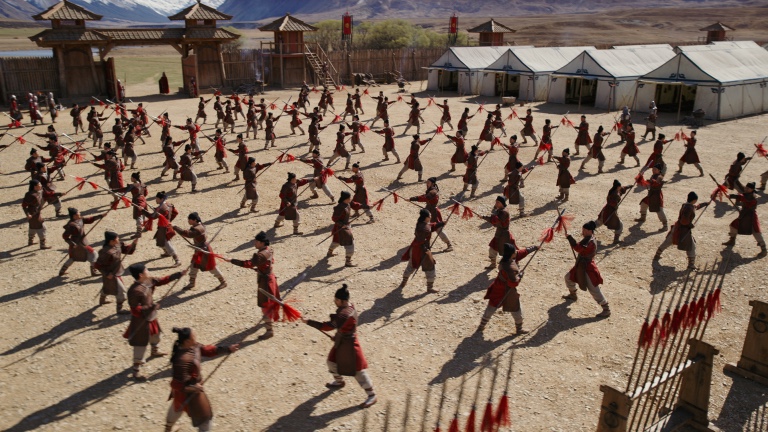
Canon’s EOS 5D Mark II camera provides full 1920 x 1080 HD video recording at user-selectable frame rates, including 24p (23.976 fps), the standard for motion-picture films. This, combined with the high-resolution image-capture capabilities of the camera’s 21.1-megapixel 36 x 24 mm full-frame CMOS sensor, enables filmmakers to intercut 5D Mark II sequences with 35mm film footage.
“The challenge with a lot of action photography is getting the camera in the right position,” noted second unit director of photography Jonathan Taylor. “I’m always looking to get the camera in impossible places because these kinds of shots make action sequences much more exciting. Most 35mm motion-picture cameras and even the leading digital cinematography cameras are just too big to get into interesting positions. I don’t want my ability to get a shot restricted by the bulk of the camera. This is why the Canon 5D Mark II camera is such a wonderful piece of equipment. It has a small footprint that enables you to find really good angles and shoot interesting positions. You can also hide it really well. For me it was an action, crash camera, and much more.”
Taylor used the 5D Mark II cameras to film point-of-view (POV) shots and other “action cuts” involving car chases, crashes and explosions for several sequences in Captain America: The First Avenger. One scene, depicting a car chase that included a taxicab crashing into a truck, was intensified by Taylor’s use of the cameras mounted on the fenders of the two colliding vehicles. He wrapped both cameras in heavy-duty black foil wrap, which he then spray-painted to match the colors of each vehicle. The result was a fast-impact shot that vividly enhances the audience’s involvement in a perilous scenario.
“It’s a very quick cut – only about 12 to 15 frames – but when audiences see a shot like that it really brings them into the action,” Taylor explained. “This was a pretty impressive shot that you would never get with any other camera but the 5D Mark II. Another great thing about those cameras is that they are small enough to be invisible to the film cameras simultaneously taking the master shot of the crash.”
Taylor also placed 5D Mark II cameras inside a taxicab to capture POV footage of it rolling after crashing into the truck. “You see what the guy inside the cab sees, which is glass breaking, the sky rushing past, and then the ground,” he noted. Additional 5D Mark II cameras mounted inside other vehicles not involved in the chase provided other drivers’ POV’s of the action zooming past them.
“The thing with action is, the more angles you get, the faster the cuts you can use, and the more energy you get into a sequence,” Taylor added. “A series of fast cuts really moves a sequence along and helps involve the audience. Plus, it’s always good to give the editors lots of material, which is why I used the Canon camera wherever I could get extra angles that are interesting.”
Interesting angles to heighten excitement and give the film’s editors more options for cutting included Canon 5D Mark II close-up POV’s of Captain America operating the switches on his speeding motorcycle. Taylor explains that these kinds of shots would usually be photographed on a stationary motorcycle against a green screen, with a moving background digitally composited into the picture in postproduction. Instead, the compact size of the camera enabled Taylor to shoot these POV shots on the motorcycle while it was actually in motion. “It was much more realistic and enhanced the action better than a stationary shot,” said Taylor.
Yet another dramatic perspective was achieved by mounting a 5D Mark II inside a Pelican case strapped to a fire hydrant. “I put this really wide Canon EF lens on it and got a great shot of the taxi hitting the hydrant really close, which you’d not normally get with another camera simply because of its bulk,” he said.
“Canon EF lenses perform very well,” Taylor noted. “A lot of rental houses can provide you with big lenses for your Canon digital SLR, but that defeats the purpose when you’re trying to hide the camera. In these cases, I only use Canon EF lenses. I think the lenses are very sharp and good in the context of what we use them for, which is quick cuts. They are very compact and the camera itself is incredibly strong. Both withstood an awful lot of abuse.”





